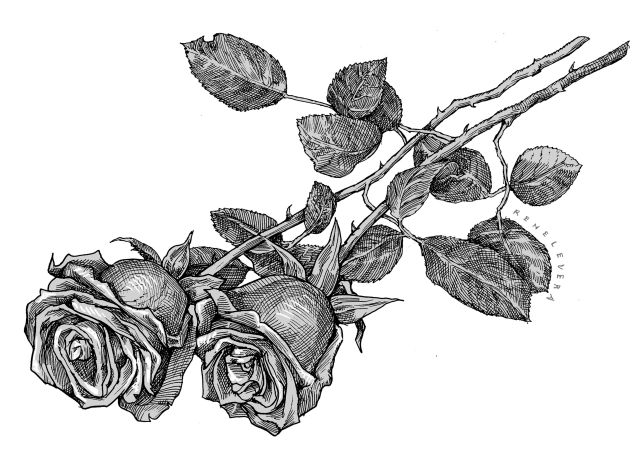
Years ago, by way of thanks, I decided to write a sonnet to give to friends and relatives. I composed the poem inside a mall, in a coffee shop with a view of a lawn with paths and flower shrubs. When I finished the sonnet, I opened my laptop to look for a picture to go with it. I had a rose in mind.
I was, I felt, in search of none other than the perfect rose. But first I had to decide what this was for me. Initially I had the image of the long-stemmed, fragrant, deep-pink American Beauty, but I kept my options open, because I had heard of other well-formed, deep-red hybrid teas, as well.
I surfed the Web and was rewarded with close to a hundred photographs of the flower, most of them sporting such fancy names as Daddy’s Pink, Ruby Wedding, Gipsy Boy, Dublin Bay, Crimson Conquest, Falstaff. (Apparently, just like a racehorse, a rose requires a name, and coining it is an art.)
In the end I settled for something that startled the wife, who has a more stable eye for beauty than my wandering own. In fact, I chose not just one but a triplet, all yellow. And – as the wife reminded me – they were far from perfect.
While they had fullness, the roses appeared unremarkable, and a leaf had a half hole on the edge, which a half-hearted bug had left. What happened was that during the search I underwent a sort of conversion. I realized that the “perfect” roses looked too good to be true, too cultured, too genetically engineered. And that what I really should scan for was something more common and simple, the variety one would find hawked by squatting elderly women at the mouth of churches on quiet weekdays, not the Valentine Day type displayed in well-lighted glass windows at the mall. Besides, but this I realized only later, yellow roses were a symbol of friendship.
And the roses had thorns, a fact that added to their being unpretentious and honest-to-goodness, and made them real all the more if all the less perfect than the mall prototypes, which did not have thorns, or only had innocuous ones.
Why, if I must hold a rose, I should risk being pricked by its thorn, or else I should just hold something as smooth as an umbrella handle. The qualities both of beauty and danger go into the rose, in whose heart lives a paradox. And the true rose lover must accept and rejoice over its contradictions.
The joyful acceptance of the thorn is Christ’s response to our search for that perfect other rose, happiness. He said in the Gospel of Matthew: “Blessed are the poor in spirit, for theirs is the kingdom of heaven. Blessed are they who mourn, for they will be comforted.
Blessed are the meek, for they will inherit the land. Blessed are they who hunger and thirst for righteousness, for they will be satisfied.
Blessed are the merciful, for they will be shown mercy. Blessed are the clean of heart, for they will see God. Blessed are the peacemakers, for they will be called children of God.
Blessed are they who are persecuted for the sake of righteousness, for theirs is the kingdom of heaven. Blessed are you when they insult you and persecute you and utter every kind of evil against you falsely because of me.
Rejoice and be glad, for your reward will be great in heaven.”
This I take to mean that, in my being rich and well-fed and full of laughter and admired, I can suppose myself, why not, as blessed by God. But the test that God has truly blessed me, that I in fact, and am not just imagining that I have His favor, is my willingness patiently to endure lack and need and sorrow and rejection when they come about, and they will because they are part of the human cycle. By presenting them as gifts to God I can in my own way participate in Christ’s self-giving love – and surely this is happiness, a more deeply satisfying happiness than that which the world knows.
“I see his blood upon the rose,” wrote Joseph Mary Plunkett. Yes, even if the rose is yellow, and its name is Golden Years.